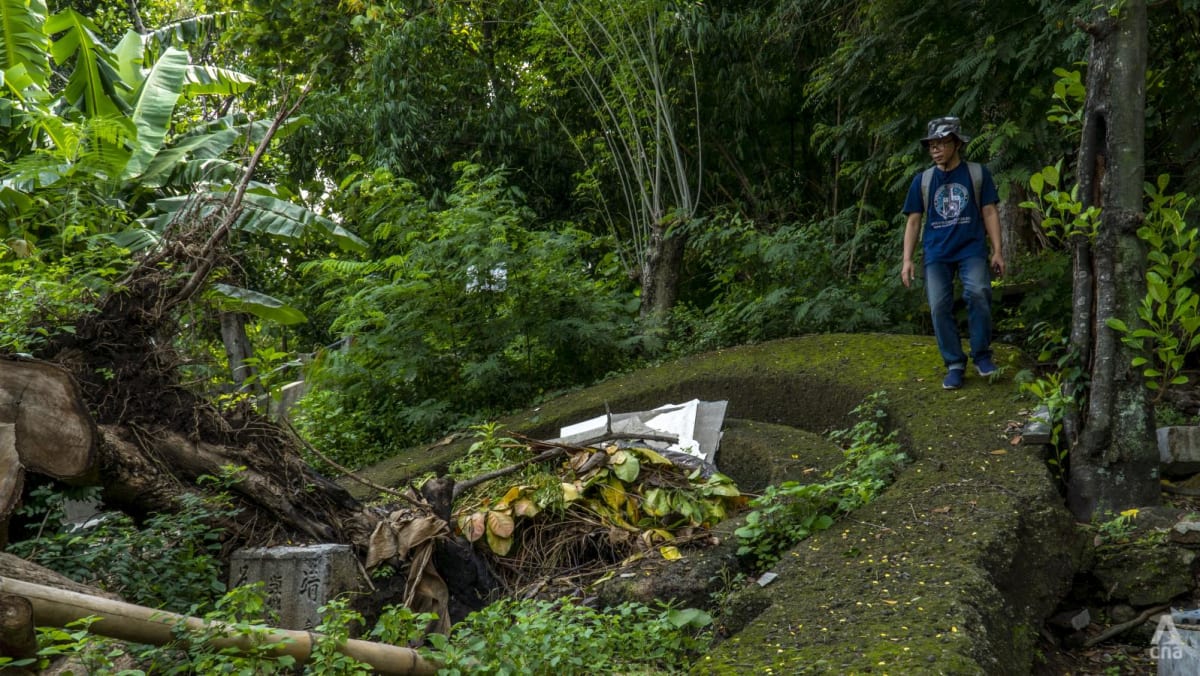Asia
Pizza delivery leads to discovery of 320-year-old tombstone and this Indonesian’s bid to help others find ancestors

The Rich History of Semarang and Its Chinese Community
Semarang, a city in Indonesia, is a place steeped in history and culture. However, the history of its Chinese community remains largely unexplored and underappreciated. Pippo, a local resident, highlights the lack of attention given to the graves of the Chinese community in Semarang, which are a vital part of the city’s historical heritage. These graves, often left unexamined, hold secrets and stories of the lives of Chinese Indonesians who have lived in the region for generations. Despite the rich cultural tapestry they represent, much of this history has been lost or forgotten over the years. This is not just a loss for the Chinese community but for the entire city, as it deprives everyone of a deeper understanding of Semarang’s diverse past.
The Historical Context: A Time of Cultural Erasure
The mid-1960s marked a tumultuous period in Indonesian history, as anti-communist sentiments swept across the country. Unfortunately, this movement also took on an anti-Chinese dimension, leading to widespread discrimination and persecution of the Chinese population. During this time, President Suharto, who ruled Indonesia with an iron fist for over three decades, implemented policies designed to suppress Chinese culture. These policies included a ban on Chinese literature, culture, and characters, effectively erasing a significant part of the Chinese community’s identity. Additionally, the government forced Chinese Indonesians to adopt Indonesian-sounding names, further distancing them from their Chinese roots. This period of cultural erasure had a profound impact on the Chinese community, leading to a loss of cultural heritage and identity that still resonates today.
The Loss of Identity: A Generation Disconnected from Its Roots
The effects of Suharto’s policies can still be seen in the lives of many Chinese Indonesians today. Bram Luska, a 38-year-old pizzeria owner and friend of Pippo, is one such individual. Bram, who stumbled upon Semarang’s oldest tombstone, reflects on the loss of his own cultural heritage. He explains that many people of his generation no longer know their Chinese surnames or speak the Chinese language. This disconnection from their roots has left many Chinese Indonesians like Bram without a clear understanding of their family’s origins or the history of their ancestors in Indonesia. Bram himself knows little about his ancestors beyond the fact that their surname was either Ng or Huang. This sense of disconnection is a poignant reminder of the long-lasting impact of the policies implemented during Suharto’s rule.
The Importance of Heritage and Identity
Bram laments the loss of his cultural heritage, stating that it is unfortunate that so many Chinese Indonesians have been deprived of their history, heritage, and identity. He sees this as a tragic loss, not just for individuals but for the entire community. Cultural heritage is a vital part of who we are, shaping our sense of self and our place in the world. For Chinese Indonesians, the erasure of their culture has meant a loss of this sense of identity, leaving many feeling disconnected from their past and uncertain about their place in Indonesian society. The stories of their ancestors, the traditions they once practiced, and the language they once spoke are all part of a rich tapestry that has been largely torn apart. This loss is not just a personal tragedy but also a cultural one, as it deprives future generations of a deep understanding of their roots.
The Broader Impact: A Community in Search of Its Roots
The story of Bram and others like him is not unique. Many Chinese Indonesians are struggling to reconnect with their cultural heritage in the wake of the policies that sought to erase it. This struggle is evident in the many questions that remain unanswered about their ancestors’ lives, their place of origin in China, and the circumstances under which they came to Indonesia. The lack of knowledge about their family’s history leaves many feeling rootless and disconnected, both from their ancestors and from their own cultural identity. The graves in Semarang, like the ones Pippo and Bram have discovered, hold the key to unlocking some of these mysteries. However, without further research and preservation efforts, much of this history may be lost forever. This is why it is so important to document and preserve the history of the Chinese community in Semarang and elsewhere in Indonesia, not just for the Chinese Indonesians themselves but for the entire nation.
Reclaiming Heritage: A Path to Healing and Understanding
In recent years, there has been a growing interest among Chinese Indonesians to reconnect with their cultural heritage. This movement is part of a broader effort to reclaim the history and identity that were suppressed during Suharto’s rule. By uncovering the stories of their ancestors and preserving their cultural traditions, Chinese Indonesians are working to restore their sense of identity and connection to their roots. This process is not just about the past; it is also about building a better future, one that is rooted in a deep understanding of where they come from. As more people like Pippo and Bram take an interest in their cultural heritage, there is hope that the history of the Chinese community in Semarang and beyond will not be lost but will instead be celebrated and preserved for future generations. This journey of discovery and reclaiming is a powerful step towards healing and understanding, not just for the Chinese community but for all Indonesians.